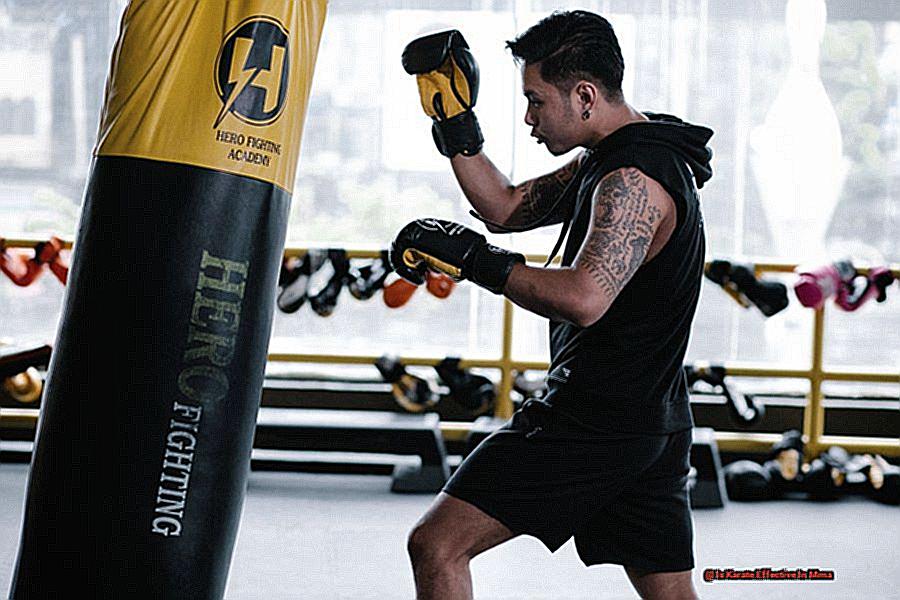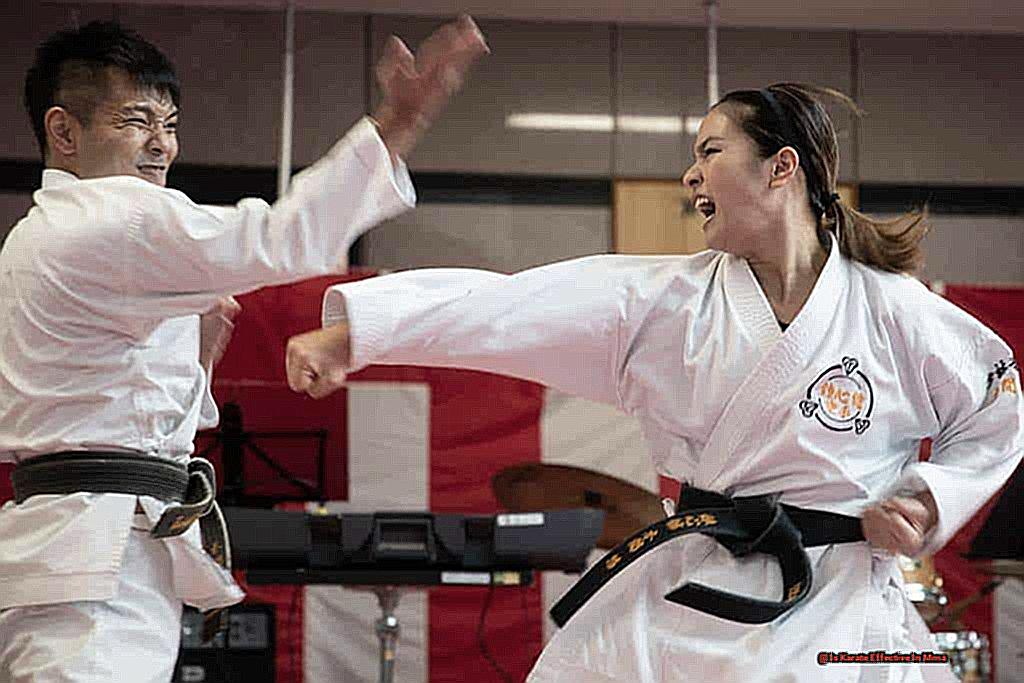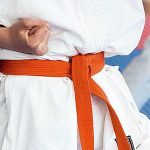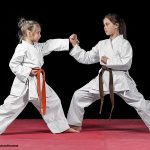Karate, a traditional martial art originating from the island of Okinawa in Japan, has been making its presence known in the world of Mixed Martial Arts (MMA) in recent years. With a rich history dating back to the 19th century, karate is renowned for its explosive strikes and dynamic footwork. While some may dismiss it as an outdated form of combat, numerous MMA fighters have incorporated elements of karate into their training and fighting styles with remarkable success.
In fact, top-tier athletes like Lyoto Machida and Stephen Thompson credit their karate background for their victories in the octagon. So what makes karate such a formidable force in MMA? Let’s explore this fascinating topic together.
From its diverse repertoire of striking techniques – including punches, kicks, elbows, and knees – to its emphasis on speed and agility through constant movement and footwork, karate offers a unique blend of offensive and defensive capabilities that can catch opponents off guard. Unlike other martial arts that prioritize brute strength, karate focuses on precision and timing, allowing smaller fighters to overpower larger opponents with well-timed strikes. Moreover, the incorporation of defensive techniques such as blocks and evasive maneuvers adds another layer of complexity to this martial art.
But it’s not just physical prowess that makes karate effective in MMA; mental discipline also plays a crucial role. The rigorous training involved in mastering this art form instills focus and determination in practitioners – qualities that are vital for success in any combat sport. As we delve deeper into the world of karate’s effectiveness in MMA, we’ll uncover how this ancient martial art has evolved to become an integral part of modern-day mixed martial arts.
So, grab your gi (karate uniform) as we embark on a journey to discover the secrets behind karate’s success in the world of MMA.
Is Karate Effective In Mma?
Karate techniques have shown to be highly effective in MMA fights when properly adapted and trained. These techniques prioritize quickness, agility, and precise strikes which can give a fighter an advantage in the fast-paced world of MMA. Moreover, the philosophy and mental training in karate can promote good sportsmanship and composure in the intense environment of MMA competitions. However, relying solely on karate may not be enough for success in MMA as it lacks grappling techniques and full-contact sparring. As a result, it is necessary to engage in cross-training and incorporate other martial arts techniques to achieve victory in MMA fights. By doing so, karate practitioners can utilize their skills in distance management, timing, and power to become well-rounded fighters in the cage.
In fact, this was demonstrated by the renowned fighter, Bruce Lee. He was a master of various martial arts including karate, and his unique style incorporated elements from different disciplines. Lee emphasized the importance of adapting and learning from different fighting styles to create a more effective approach. This adaptable mindset is crucial in MMA where fighters must constantly evolve and adapt to different opponents.
While karate’s focus on striking can be advantageous in MMA, its lack of grappling techniques can put practitioners at a disadvantage against opponents who excel in that area. Therefore, incorporating grappling techniques from other martial arts such as Jiu-Jitsu or wrestling is essential for success. This combination of styles not only improves one’s arsenal of techniques but also enhances their overall fighting strategy.
Ultimately, while karate alone may not be sufficient for success in MMA, its unique strengths can be utilized alongside other martial arts to create a well-rounded fighter. By cross-training and constantly evolving their skills, karate practitioners can become formidable opponents in the cage. So, is karate effective in MMA?
The debate surrounding the effectiveness of karate in MMA
The debate surrounding the effectiveness of karate in MMA has valid points for both sides.
Critics argue that the strict and traditional training methods may not fully prepare fighters for the fast-paced nature of MMA. On the other hand, supporters believe that karate techniques can be adapted and utilized effectively in the MMA arena.
However, it is crucial for fighters to also incorporate grappling techniques from other martial arts to create a well-rounded approach in MMA.
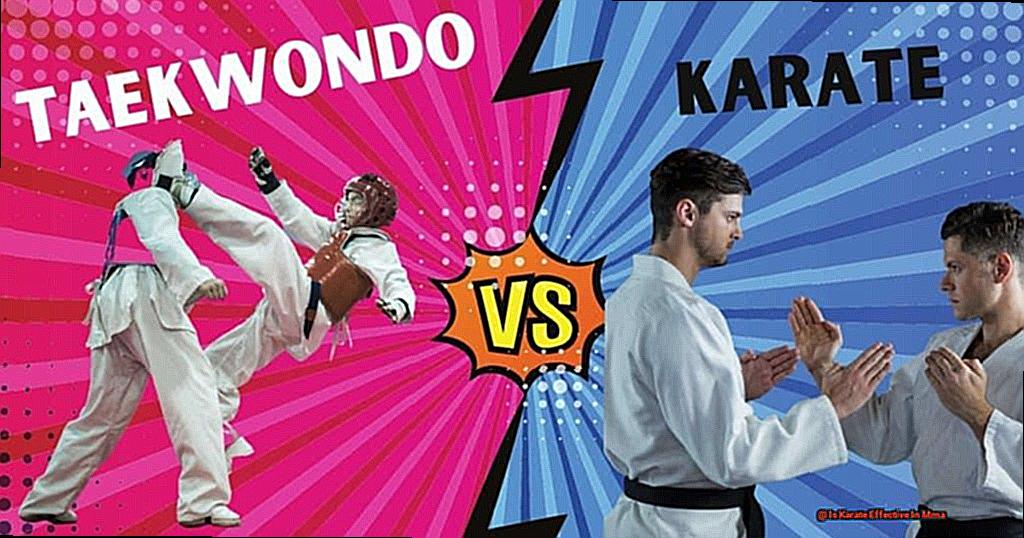
Incorporating grappling techniques in karate for MMA
| The Advantages of Integrating Grappling Techniques in Karate for MMA | Explanation |
| Enhanced Flexibility | Incorporating grappling techniques into karate training expands the skillset of practitioners, allowing them to adapt to various scenarios and become more versatile in combat situations. |
| Improved Ground Combat Skills | In MMA, having strong ground combat skills is vital for defending oneself and gaining an advantage over an opponent. By integrating grappling techniques into their training, karate practitioners can develop these skills and become well-rounded fighters. |
| Greater Control Over Opponents | Grappling techniques, including joint locks and throws, give practitioners the ability to manipulate their opponents’ movements and potentially incapacitate them, adding an extra layer of defense. |
| Effective Self-Defense Abilities | In real-life self-defense situations, grappling techniques can be highly effective in neutralizing threats and protecting oneself. Incorporating these techniques into karate training enhances overall self-defense capabilities. |
| Ability to Utilize Striking and Grappling Methods | Karate is primarily a striking art, but integrating grappling techniques allows practitioners to effectively utilize both striking and grappling methods, making them more well-rounded fighters. |
To sum up, incorporating grappling techniques in karate for MMA offers numerous advantages, including enhanced flexibility, improved ground combat skills, greater control over opponents, effective self-defense abilities, and the ability to utilize both striking and grappling methods. By integrating these techniques into their training, karate practitioners can become well-rounded fighters and be better prepared for MMA competitions and real-life self-defense situations.
The importance of full-contact sparring in preparing for MMA
Full-contact sparring plays a vital role in preparing for MMA by replicating the intensity and unpredictability of real combat. It provides karate practitioners with the opportunity to apply their striking techniques against a defending and countering opponent. Furthermore, it also allows them to practice grappling techniques and learn how to defend against them.
Full-contact sparring has several specific benefits for karate practitioners as they prepare for MMA:
- Fostering Adaptability: By exposing practitioners to various styles and techniques, full-contact sparring helps them develop the ability to adapt and adjust their strategies accordingly. This skill is crucial in MMA, where opponents may come from different martial arts backgrounds.
- Improving Timing and Distance Control: In MMA, fighters must quickly and effectively close the distance with their opponents. Full-contact sparring helps develop timing and distance control, enabling karate practitioners to strike or grapple at the most opportune moments.
- Enhancing Endurance and Stamina: As a physically demanding activity, full-contact sparring requires practitioners to have good endurance and stamina. Regularly participating in these sessions can help build these qualities, which are essential in MMA fights that often last multiple rounds.
- Building Confidence: Full-contact sparring can be intimidating, especially for beginners. However, with practice, practitioners gain confidence in their abilities, making them better equipped to handle the intensity of MMA fights.
- Practicing Mental Toughness:** In addition to the physical demands, full-contact sparring also challenges one’s mental toughness. Learning to remain calm and focused under pressure is a valuable skill that can be applied in both MMA fights and everyday life situations.
- Improving Overall Fighting Skills: By allowing karate practitioners to put all their skills into practice – striking, kicking, grappling, and defense – full-contact sparring prepares them for the unpredictable nature of MMA fights.
In conclusion, full-contact sparring is an essential aspect of preparing for MMA as it enables karate practitioners to develop adaptability, timing and distance control, endurance, confidence, mental toughness, and overall fighting skills.
Leveraging speed, agility, and footwork in MMA through karate training
Leveraging speed, agility, and footwork in MMA through karate training is a game-changer for fighters. The martial art of karate places a strong emphasis on these key aspects, making it a perfect addition to MMA training. In the fast-paced world of MMA, quick reflexes and swift movement are essential for success. Let’s explore how incorporating karate training can greatly improve a fighter’s speed, agility, and footwork.
| Boosts Speed | Enhances Agility | Sharpens Footwork |
| Karate training incorporates various drills and exercises that focus on developing explosive speed. This allows fighters to quickly close the distance and deliver powerful strikes. | The fast-paced movements and agility ladder training in karate can improve a fighter’s ability to change direction and react quickly to their opponent’s movements. | Karate’s emphasis on precise footwork techniques, such as pivoting and shuffling, can help MMA fighters maintain balance and control while moving in and out of striking range. |
Incorporating karate training into MMA also provides specific benefits for speed, agility, and footwork through a variety of drills and techniques.
Reflex drill:
This drill involves reacting quickly to random signals and executing sharp punches with proper form. It not only improves hand speed but also develops quick decision-making skills in combat scenarios.
Agility ladder training:
The agility ladder is a common tool used in karate training to improve footwork speed and coordination. This greatly benefits MMA fighters by allowing them to move more efficiently and effectively in the cage.
Reaction pad training:
Similar to the reflex drill, reaction pad training simulates real-life combat scenarios to enhance speed and accuracy of strikes. By incorporating this into MMA training, fighters can improve their reaction time and precision when delivering strikes.
Shadowboxing:
A key component of karate training, shadowboxing allows for working on speed without equipment or a partner by visualizing an opponent and using fast combinations and head movement. This helps MMA fighters develop quick reflexes and improve their ability to anticipate and evade strikes.
Timing and countering drills:
These drills improve anticipation skills by evading strikes while countering with quick techniques. This not only enhances speed and agility but also improves overall defensive skills.
Speed kick combinations:
Karate is known for its explosive kicks, and incorporating these into MMA training can greatly improve a fighter’s speed and power. These combinations also require precise footwork, further enhancing a fighter’s agility.
Partner reaction drills:
Incorporating partner drills into MMA training can provide a dynamic experience by responding quickly to attacks from a training partner. This helps fighters develop the ability to react quickly to their opponent’s movements, improving their overall speed, agility, and footwork.
Mental benefits of traditional karate training for MMA fighters
MMA fighters can greatly benefit from the mental fortitude gained through traditional karate training, as it instills discipline, focus, resilience, mental toughness, controlled aggression, and visualization techniques.
These valuable skills give fighters an advantage in the unpredictable and high-pressure environment of MMA competitions. Not only does karate training teach fighters to persevere through adversity and never give up, but it also builds a strong mindset that can be applied in the octagon.
Furthermore, karate helps fighters learn how to manage their emotions and use their aggression strategically, which is crucial in MMA. The visualization techniques utilized in karate can also assist MMA fighters in mentally preparing for a fight by envisioning various strategies and potential scenarios.
In conclusion, traditional karate training serves as a solid foundation for developing exceptional mental strength in MMA fighters. In the fast-paced world of MMA, having a strong mental game is just as important as physical prowess.
This is where traditional karate training comes into play, providing invaluable benefits for fighters. By cultivating discipline, focus, resilience, and mental toughness, karate helps fighters stay composed and make calculated decisions even in the most chaotic of situations.
Moreover, controlled aggression is a vital skill in MMA, and karate teaches fighters how to channel their aggression effectively to gain an edge over their opponents. Additionally, visualization techniques used in karate can enhance an MMA fighter’s mental preparation for a fight by visualizing different scenarios and strategies.
It has helped me develop a strong mindset and overcome challenges both inside and outside of the ring.
Success stories of karate practitioners in the world of MMA
Karate practitioners have achieved remarkable success in the world of MMA by utilizing their rigorous training and skilled techniques to excel in the sport. Let’s take a look at some inspiring success stories of these karate practitioners who have conquered the world of MMA with their unique abilities.
| Name | MMA Accomplishments | Karate Background |
| Lyoto Machida | – Held the prestigious title of UFC Light Heavyweight Champion – Defeated top MMA fighters like Rashad Evans, Randy Couture, and Dan Henderson |
– Began his training in Shotokan Karate at the tender age of 3 – Holds an impressive black belt in both Shotokan Karate and Brazilian Jiu-Jitsu |
| Stephen Thompson | – Multiple-time champion in kickboxing – Currently ranked #5 in the UFC Welterweight division |
– Began his training in karate at just 3 years old – Holds a black belt in American Kickboxing and Tetsushinkan Karate |
| Georges St-Pierre | – Former two-division champion in UFC – Welterweight and Middleweight – Considered one of the greatest MMA fighters of all time |
– Trained in Kyokushin Karate before transitioning to MMA – Holds a black belt in Kyokushin Karate and Brazilian Jiu-Jitsu |
| Lyman Good | – Proudly holds the Bellator Welterweight Championship title – Has also competed in both UFC and PFL events |
– Started training in Goju-Ryu Karate at just 7 years old – Holds a black belt in both Goju-Ryu Karate and Brazilian Jiu-Jitsu |
These are just a few of the many examples of karate practitioners who have risen to the top in the world of MMA. By incorporating their traditional karate training and techniques, they have not only excelled in the sport but also achieved numerous great accomplishments.
Moreover, the focus on discipline, mental strength, and controlled aggression in karate has played a crucial role in their success in the unpredictable and high-pressure environment of MMA competitions. This mental toughness and resilience have enabled them to overcome challenges and triumph in tough fights.
In addition, learning from experienced karate practitioners can give fighters an edge in the competitive world of MMA. By taking advantage of educational content and training resources from experienced karate practitioners, MMA fighters can enhance their skills and techniques, combining the best of both worlds – karate and MMA.
Conclusion
After analyzing the evidence, it is clear that karate holds a significant place in the realm of MMA. Its explosive strikes and dynamic footwork make it a valuable asset for any fighter looking to dominate in the cage. While some may doubt its effectiveness, top-tier athletes like Lyoto Machida and Stephen Thompson have proven otherwise with their successful incorporation of karate techniques into their fighting style.
By utilizing its diverse range of striking techniques and incorporating defensive maneuvers, karate practitioners can surprise opponents with precision and timing rather than relying on brute strength alone.
However, it is crucial for fighters to also incorporate grappling techniques from other martial arts to create a well-rounded approach in MMA. This fusion of styles allows for a more versatile and adaptable game plan, making it difficult for opponents to predict or counter.
Yet, beyond physical prowess, traditional karate training offers numerous mental benefits such as discipline, focus, resilience, mental toughness, controlled aggression, and visualization techniques – all essential qualities for success in the intense environment of MMA competitions.
With its rich history dating back to the 19th century and constant evolution to adapt to modern-day combat sports, karate continues to prove its effectiveness in the world of MMA.
So let us embrace this ancient martial art and unlock its secrets together as we embark on our own journey towards victory in MMA.

